NCERT Class 10 Science Chapter 7 Notes Control And Coordination- Download PDF Notes
Ever thought about how your body knows when to move, balance, or react? The NCERT Class 10 Science Chapter 6 Notes Control and Coordination breaks down the process in a simple way and explains the role of the brain, spinal cord, sense organs, and hormones. With short points, labelled diagrams, and real-life examples, understanding this process becomes easier. By doing regular practice of the NCERT Notes, students can perform well in their board exams and in future competitive exams.
This Story also Contains
- NCERT Class 10 Science Chapter 6 Control and Coordination Notes: Download PDF
- Class 10 Science Chapter 6 Control and Coordination Notes
- Chapter 6 Science Control and Coordination: Previous Year Question and Answers
- How to Use Control and Coordination Class 10 Notes Effectively?
- Advantages of Class 10 Science Chapter 6 Control and Coordination Notes
- Chapter-Wise NCERT Class 10 Notes Science
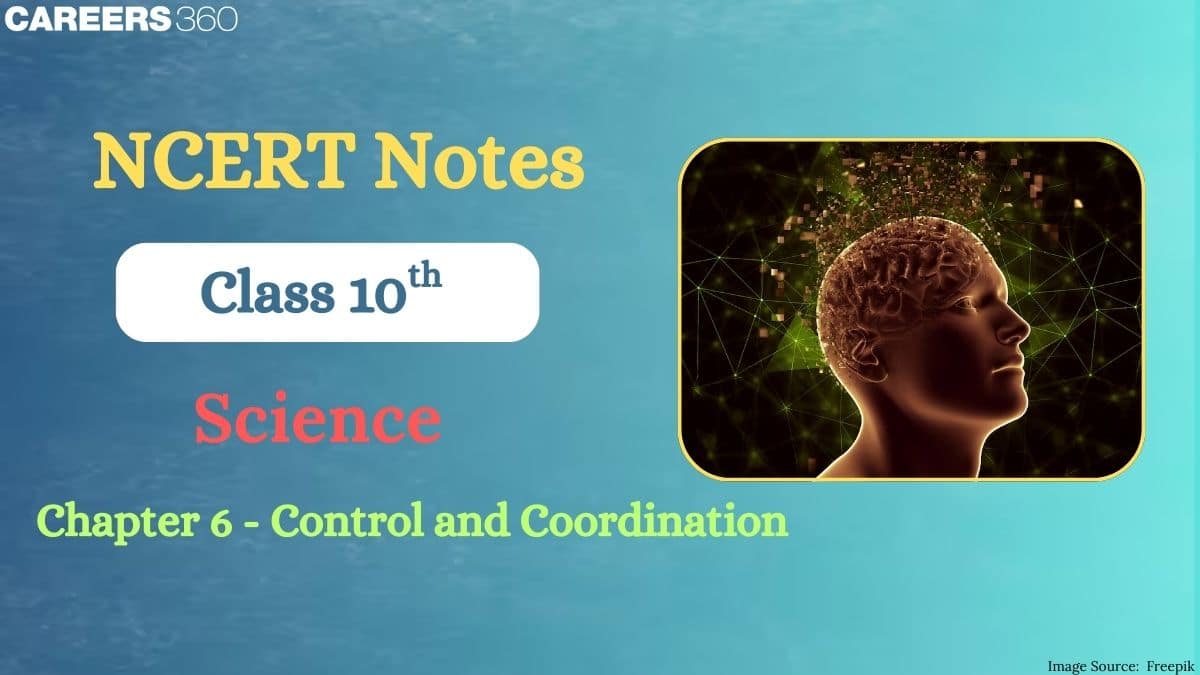
The Control and Coordination Class 10 Notes show how hormones help us respond and adjust to changes inside and outside the body. It talks about reflex actions, brain parts, plant hormones, and more, step by step. Students can remember important points easily for the exam by studying from the NCERT Class 10 Science Chapter 6 Notes PDF. Going through the NCERT Notes for Class 10 will make them more confident and improve their problem-solving skills.
NCERT Class 10 Science Chapter 6 Control and Coordination Notes: Download PDF
The Control and Coordination chapter explains how our body and other living organisms respond to their surroundings. Students can now download the NCERT Class 10 Science Chapter 6 Notes PDF. The concepts are made simple with clear explanations to help revise easily before exams. The NCERT Notes for Class 10 Science are a valuable resource for quick and organised study.
Also, students can refer to:
Class 10 Science Chapter 6 Control and Coordination Notes
In this chapter, students will explore how living organisms coordinate and control their actions. The Control and Coordination chapter explains the role of the nervous system and hormones in maintaining balance and responding to the environment. Studying through the Control and Coordination Class 10 Notes builds a strong base for advanced biology as it covers all the important concepts from the NCERT.
Animals - Nervous System
- Nervous and muscular tissues provide control and coordination in animals.
- Environmental changes are detected by specialised tips (dendrites) of some neurons (present in sense organs, i.e., ear, tongue, skin, nose, and eye) by chemical reactions that create electrical impulses.
- This impulse travels through the cell body to the axon of the neuron.
- The nerve impulse is transmitted from one neuron to another through a junction called a synapse.
- Synapses could be electrical synapses or chemical synapses.
- The neuromuscular junction, formed between the neuron and the muscle fibre, transmits nerve impulses to muscle cells.
What Happens in Reflex Actions?
- Reflex actions refer to sudden, involuntary reactions to a stimulus in the environment.
- No thinking in the brain is involved in reflex actions; instead, this quick response is mediated by the reflex arc in the spinal cord.
- The spinal cord is a bundle of nerves on its way towards the brain from all across the body.
- In a reflex arc, a sensory neuron receives a signal from a receptor organ and transmits the impulse via a sensory neuron in the spinal cord, and then to a motor neuron that carries this impulse to the effector organ.
- It can also be perceived as the quickest/ shortest route for an impulse between a receptor and an effector.
Human Brain
- The central nervous system (CNS) is the site for information processing and control. It is constituted by the brain and spinal cord.
- The brain is the main coordinating centre of the body.
- The peripheral nervous system (PNS) facilitates communication between the CNS and the rest of the body.
- Nerves originating from the brain are called cranial nerves, and those from the spinal cord are termed spinal nerves.
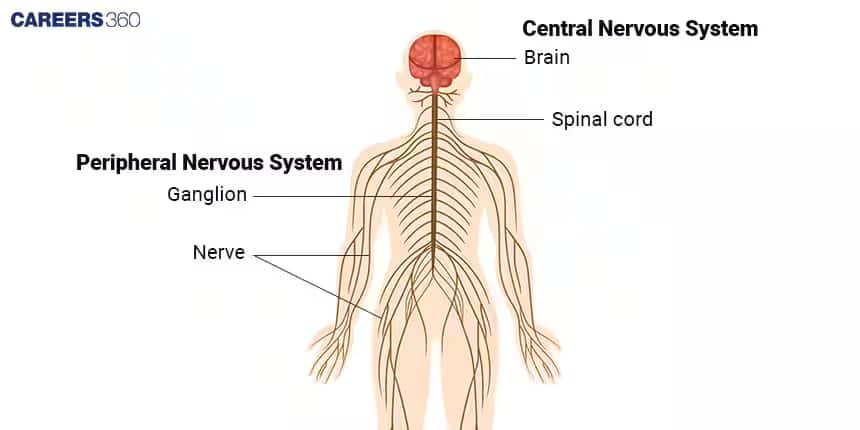
The brain has three broad divisions: forebrain, midbrain, and hindbrain.
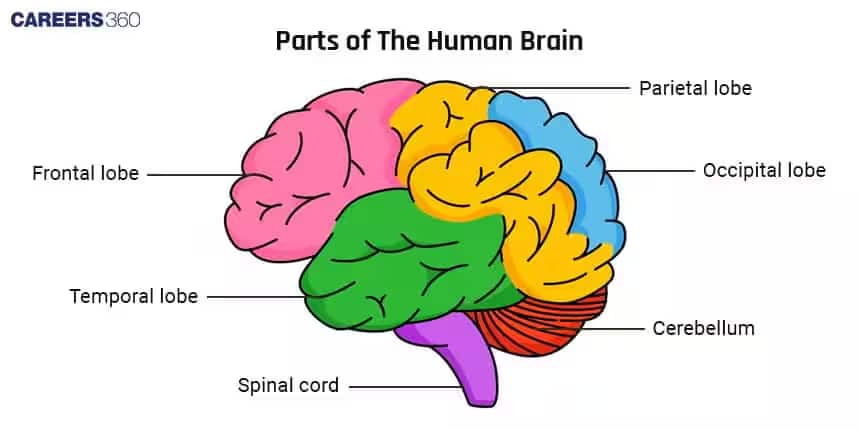
- The cerebrum (part of the forebrain) is the biggest section of the brain. It receives sensory impulses from various receptors and is called the main thinking part of the brain.
- It controls all voluntary actions.
- The forebrain has specialised areas for various senses and a separate area for the interpretation of this sensory information by combining data from other receptors and comparing it with existing information stored from past experiences.
- The Hypothalamus (part of the forebrain) is associated with various sensations like hunger.
- The midbrain and hindbrain are responsible for controlling a lot of involuntary actions.
- The medulla (part of the hindbrain) controls involuntary actions, including blood pressure, salivation, and vomiting.
- The cerebellum (part of the hindbrain) maintains body balance and ensures the precision of voluntary actions.
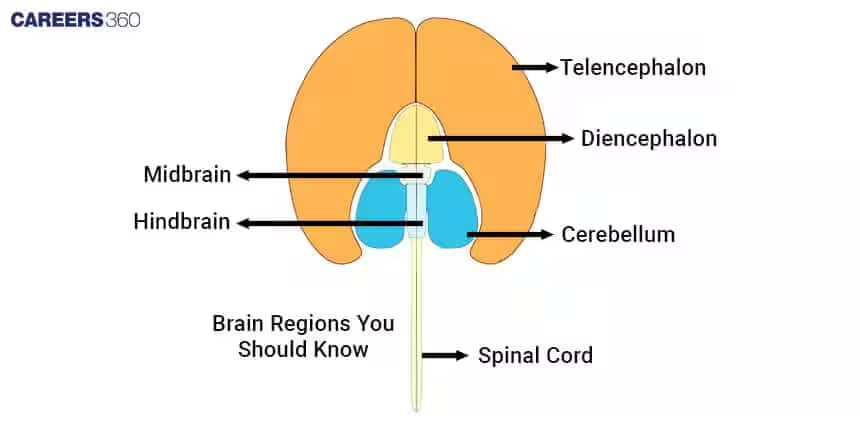
How are These Tissues Protected?
- The brain is protected by the skull, which is a bony structure around the brain.
- Additional shock absorption is provided by the fluid around the brain.
- The spinal cord is protected by the bony vertebral column.
How Does The Nervous Tissue Cause Action?
- Muscle cells contract (shorten) in response to a nerve impulse.
- This change in muscle cells is brought into action by specialised muscle proteins in these cells that change their arrangement in response to an electrical impulse; this new arrangement of proteins shortens the muscle fibre.
Coordination In Plants
- Unlike animals, plants don’t have nervous tissues for control and coordination.
- Leaves of the touch-me-not plant (Mimosa pudica) fold when touched; this movement is independent of growth.
- Growth-dependent movement in plants is seen during seed germination, as the roots go down in the soil, and the stem rises in the air.
Immediate Response to Stimulus
- The plants also use electrical-chemical means to convey information from cell to cell.
- Folding leaves of touch-me-not is an immediate response to stimulus (touch/shock), it’s caused by a lowering of turgidity in plant cells.
Movement Due to Growth
- Environmental stimuli like light, gravity, or water can trigger directional growth towards/against the stimulus.
- The bending of plant shoots towards light is called phototropism.
- Plant roots move down the soil in the direction of gravity; this behaviour is termed positively geotropic growth.
- Plants also react to water; hydrotropism, and chemical stimuli; chemotropism, which is seen in pollen tube development in angiosperm ovules.
Electrical vs Chemical Coordination
- Electrical impulses deliver the message very quickly as compared to chemically administered signals, but cells have to be in direct contact with neurons to send/receive impulses.
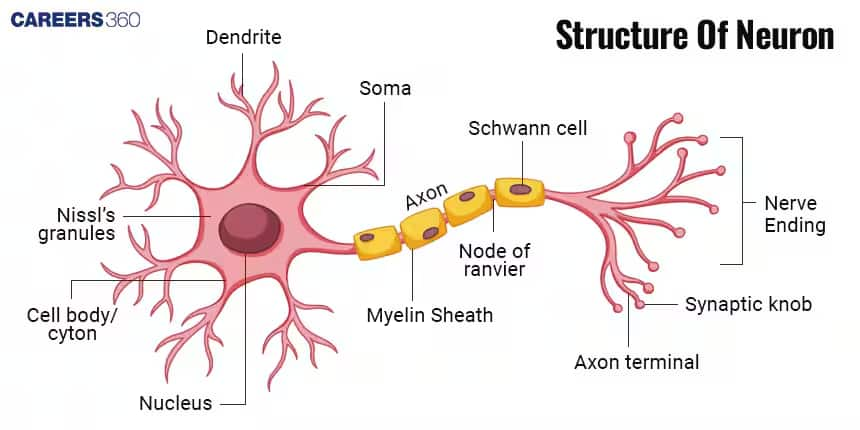
- An electrical impulse also requires some time to reset before it can transmit the next impulse.
- In chemical coordination, cells release the messenger chemical that will reach its target by diffusion.
- Target cells have special molecules on their plasma membrane to detect the messenger molecule.
- This method of communication is much slower than electrical transmission, but it can be used steadily and persistently.
Plant Hormones
- Similar to animals, plants also use chemicals to communicate between different parts.
- Auxins, gibberellins, and cytokinins are plant-growth-promoting hormones.
- Auxin is synthesised at the shoot apex; it promotes cell elongation. Auxin causes the bending of the shoot towards the light.
- Gibberellins help in stem growth.
- A high concentration of cytokinins is found in areas of active cell division; they promote cell division. Abscisic acid is a plant growth inhibitor hormone that affects the wilting of leaves.
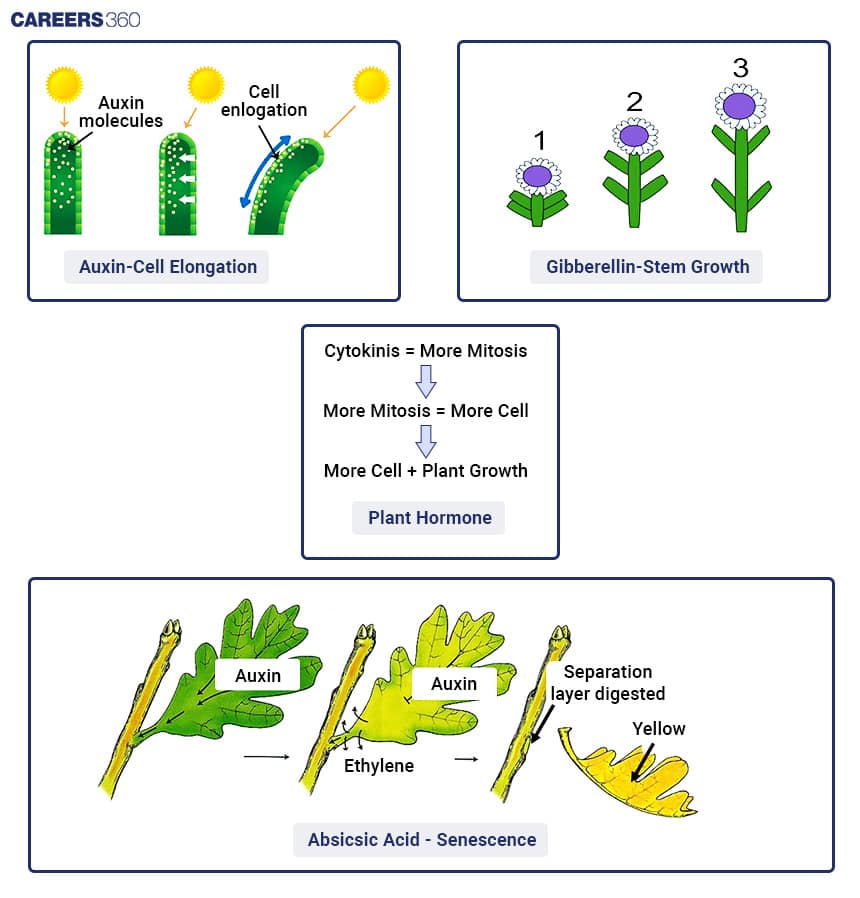
Hormones in Animals
- Chemical signals or hormones reach all cells of the body, unlike neural impulses. As electrical signalling is under the nervous system, chemical messaging is studied under the endocrine system.
- Increased concentration of adrenaline hormone fastens the heartbeat, diverts blood to skeletal muscles, and increases breathing rate. It decreases blood flow to the digestive tract and skin. It prepares the body for emergency response.
- The thyroid gland requires iodine for the formation of the thyroxine hormone. Thyroxin regulates carbohydrate, protein, and fat metabolism in the body. The deficiency of iodine leads to goitre.
- The pituitary gland (located in the brain) secretes multiple hormones, including the growth hormone that is required for proper growth and development.
- Excess or scarcity of growth hormone will result in giantism or dwarfism, respectively.
- On reaching puberty (10-12 years old), the secretion of estrogen and testosterone hormones starts in the female and male body, respectively.
- Blood glucose level is regulated by the insulin hormone released by the pancreas.
Subject-Wise NCERT Solutions
Chapter 6 Science Control and Coordination: Previous Year Question and Answers
Some of the questions that have come up in past years from the chapter are given below. To answer these questions, the NCERT Class 10 Science Chapter 6 Notes Control and Coordination acts as a useful guide.
Question 1. Plants use electrical impulses to convey their information from cell to cell. True or False.
Option 1. True
Option 2. False
Answer :
Unlike animals, plants neither have a nervous system nor muscles. Plants use electrical-chemical signals to convey their information from cell to cell. Therefore, the given statement is false.
Hence, the correct answer is option (2) False.
Question 2. The mechanism used by the body to regulate the secretion of hormones is called
Option 1. Hormonal control
Option 2. Hormonal regulation
Option 3. Growth hormone
Option 4. Feedback mechanism
Answer :
A mechanism used by the body to regulate the secretion of hormones is called a feedback mechanism.
Hence, the correct answer is option (4): Feedback mechanism
Question 3. Which gland secretes the growth hormone?
Option 1. Pituitary gland
Option 2. Thyroid
Option 3. Hypothalamus
Option 4. Adrenal gland
Answer :
Growth hormone is secreted by the pituitary gland. It regulates the growth and development of the body.
Hence, the correct answer is option (1) Pituitary gland
Question 4. Which part of the brain controls voluntary actions?
Option 1. Cerebellum
Option 2. Medulla oblongata
Option 3. Cerebrum
Option 4. Pons
Answer :
The cerebrum controls voluntary actions like thinking, speaking, and movement. It is the largest part of the brain and is responsible for conscious activities.
Hence, the correct answer is option (3) Cerebrum
Question 5. Which hormone is responsible for the fight or flight response?
Option 1. Thyroxine
Option 2. Insulin
Option 3. Adrenaline
Option 4. Growth hormone
Answer :
Adrenaline prepares the body for emergency situations by increasing heart rate and blood flow. It is released from the adrenal glands during stress.
Hence, the correct answer is option (3) Adrenaline.
How to Use Control and Coordination Class 10 Notes Effectively?
Understanding how the brain, nerves, and hormones work together can be difficult, but with the right notes, revision becomes easier. These notes help students connect concepts and prepare smartly for exams.
Start by going through the diagrams of the nervous system and plant movements, as they are frequently asked in exams.
Revise the important definitions given in Class 10 Science Chapter 6 Control and Coordination Notes PDF for quick recall.
Focus on the differences between nervous control and chemical control to make the concepts stronger.
Practice writing answers in the correct format for topics like reflex action, coordination in plants, and the role of hormones.
Use Class 10 Science Chapter 6 Control and Coordination Notes for final revision before exams to save time and boost confidence.
Advantages of Class 10 Science Chapter 6 Control and Coordination Notes
Studying through the well-organised notes makes it easier for students to understand the coordination mechanisms of the human body. It is an important chapter that explains how living organisms respond to their internal and external surroundings.
- Class 10 Science Chapter 6 Control and Coordination Notes PDF includes clear explanations of the human nervous system and the structure of the brain.
- The role of hormones in plants and animals is also covered in the notes, which helps students remember concepts effectively.
- Using the notes allows them to improve their memory retention and boosts overall performance in board exams and competitive exams like NEET.
- Important diagrams and flow charts are included to simplify difficult concepts like impulse transmission and feedback control.
Chapter-Wise NCERT Class 10 Notes Science
Here are the direct links to access the notes for each of the 13 chapters included in Class 10 Science. These notes are written in simple and easy language. Students can use them for quick revision before exams or to build a strong basis for higher classes.
Frequently Asked Questions (FAQs)
Reflex actions are involuntary and happen automatically without conscious control, involving the spinal cord and brain. Walking is a voluntary action controlled consciously by the brain and learned over time.
At the synapse, electrical signals are converted into chemical messengers that cross the gap to the next neuron, where they are converted back into electrical signals to continue transmission.
The cerebellum is responsible for maintaining posture and equilibrium by coordinating motor functions. It is explained in detail in the NCERT Class 10 Science Chapter 6 Notes Control and Coordination.
Chemical coordination in plants happens through plant hormones, which regulate growth and responses to stimuli.
Hormones act as chemical messengers in animals, regulating various functions like growth, metabolism, and reproduction through feedback mechanisms. The NCERT Class 10 Science Chapter 6 Notes Control and Coordination acts as a guide for students to understand the role of hormones.
This chapter helps students understand how the nervous system and hormones coordinate various activities in plants and animals, forming the base for higher-level biology topics in Classes 11 and 12.
The notes include summarized explanations, key diagrams, and comparison tables of the nervous and endocrine systems, allowing students to revise important points quickly before exams.
Popular Questions
Courses After 12th
Applications for Admissions are open.
As per latest syllabus. Physics formulas, equations, & laws of class 11 & 12th chapters
JEE Main Important Chemistry formulas
Get nowAs per latest syllabus. Chemistry formulas, equations, & laws of class 11 & 12th chapters
JEE Main high scoring chapters and topics
Get nowAs per latest 2024 syllabus. Study 40% syllabus and score upto 100% marks in JEE
JEE Main Important Mathematics Formulas
Get nowAs per latest syllabus. Maths formulas, equations, & theorems of class 11 & 12th chapters
